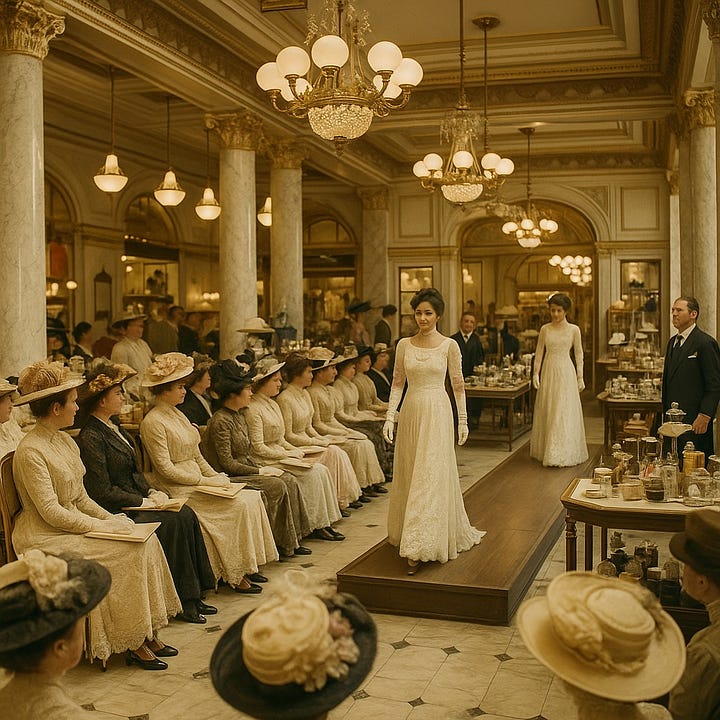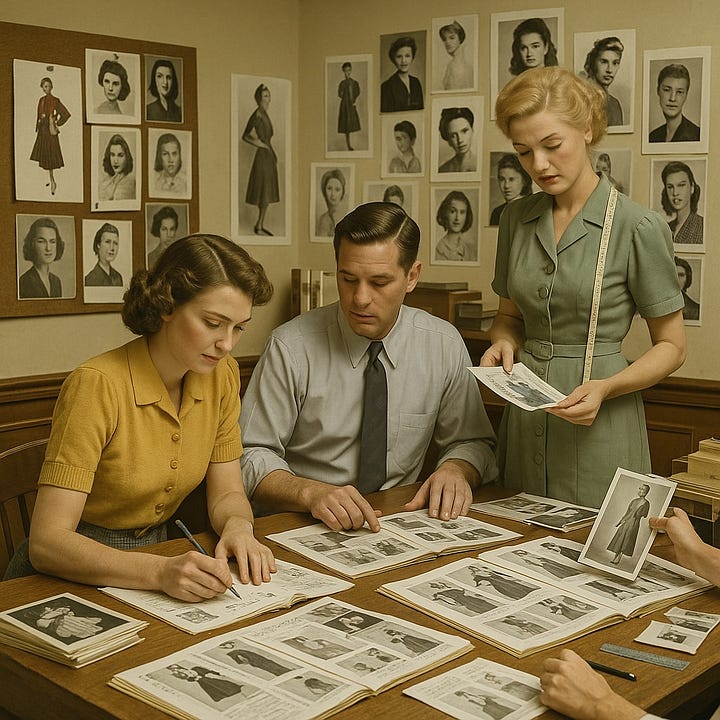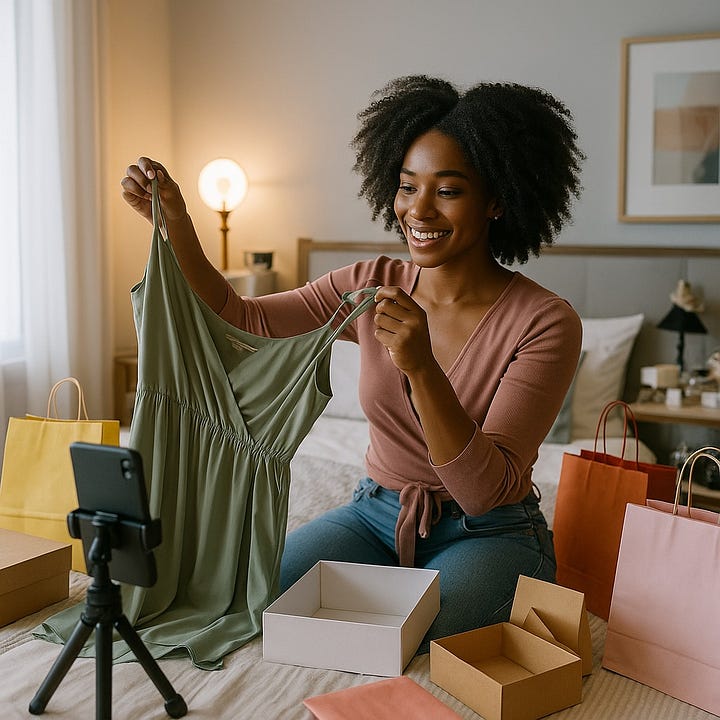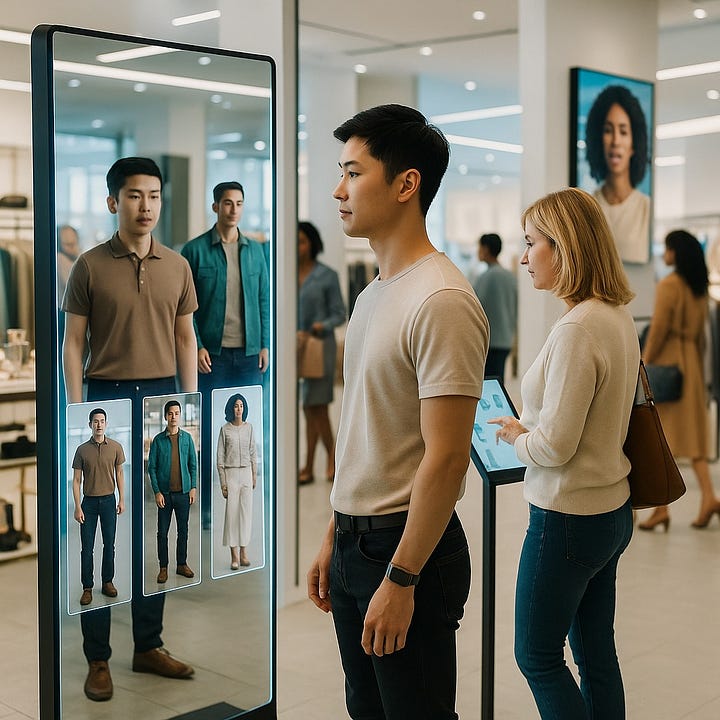🏷️ When Faces Sold Trust: From Catalog Models to Influencers
Before we followed influencers, we followed faces in the catalog - and the trust they inspired built retail empires.
Before retail was digital, it was deeply human.
A smile, a stance, a stranger’s confidence - that’s what sold us.
Not a spec sheet. Not a star rating.
A face.
For over a century, faces sold trust.
And trust sold everything.




🪞 Where Did It Begin?
In the late 1800s and early 1900s, department stores like Selfridges in London didn’t just stack goods - they staged experiences. Selfridges was among the first to host public fashion shows, a theatrical revelation where shoppers watched garments come to life on real people, in real motion.
This was revolutionary:
Shoppers didn’t have to imagine anymore. They could see.
That idea - “show it to sell it” - soon leapt across the Atlantic.
Enter the Golden Age of Catalogs (1900s–1960s):
Sears, Roebuck & Co. distributed over 300 million catalogs annually at its peak.
Montgomery Ward, JCPenney, and L.L.Bean followed suit, each with their own stylized worlds and aspirational figures.
The models in these catalogs were idealized archetypes: poised women in kitchen sets, confident men in hunting jackets, smiling children at play.
They weren’t just selling products. They were selling identity, lifestyle, even family values.
Some catalog models became household names.
Others remained anonymous - but still deeply trusted.
These faces were a kind of guarantee:
“If she’s wearing it, maybe I can too. And maybe I’ll feel like her when I do.”
🌀 How Did This Evolve?
With the rise of television in the 1950s - 70s, celebrity endorsement took over.
Actors and athletes replaced anonymous models.
And the visual cues remained powerful - but now with fame attached.
In the 1980s and 1990s, brands like Victoria’s Secret perfected the model-as-brand strategy.
Catalogs became coffee table fixtures. Names like Heidi Klum and Tyra Banks blurred the line between supermodel and sales tool.
But the turning point came with the internet.
Suddenly, the catalog came alive.
Brands launched e-commerce sites with rotating model carousels.
Early influencers built trust on YouTube haul videos and Tumblr lookbooks.
Instagram and Pinterest created platforms where everyone could become the model—if only for a moment.
Today, we trust peer faces over professional ones.
We follow micro-influencers with 2,000 followers because they look like us, dress like us, live like us.
And that relatability sells better than any supermodel ever could.
SKIMS, Fenty, and Aerie aren’t just selling underwear - they’re selling representation.
And the catalog?
It lives on… in your feed.
🤖 What’s Next?
Technology is deepening the connection between face and product.
AI avatars let shoppers see clothes on simulated versions of themselves.
Smart mirrors offer AR-based try-ons, sometimes suggesting looks “based on your face shape.”
Influencer collaborations dominate Gen Z’s buying behavior - where trust is personal, not institutional.
And it’s not just about appearance - it’s about authority.
The face that sells trust today also tells stories, shares opinions, makes content.
Commerce is now a conversation.
🪞 The Echo Today
From live TikTok shopping streams to Amazon influencer storefronts, we’re still following faces.
Only now, the camera faces both ways.
Modern consumers are no longer just audiences—they’re models too.
If the 20th century was about selling aspiration,
the 21st is about mirroring reality - and monetizing it.
🕊️ What’s the Lesson?
The power of the face hasn’t faded.
It’s just shifted from the page to the platform.
Retail is still about trust.
And trust often begins with someone we believe.
Whether it’s a mother in a Montgomery Ward catalog,
a creator on TikTok,
or your best friend sharing a link -
We see it. We feel it. Then we buy.
Because faces still sell trust.
🕰️ Echoes of Commerce




